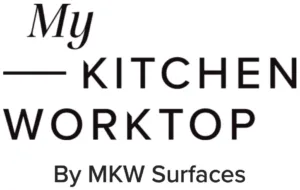Engineered quartz has literally become the preferred choice of material for kitchen countertops in homes across the world. With just over 30 years since inception, quartz worktops have overtaken natural granite as the most popular surface for kitchens. Composed of a mixture of flexible resins and pure quartz, engineered stones such as Caesarstone quartz surfaces provide the same strength as that of granite worktops but come with additional benefits, such as manufacturers’ warranty, ease of use and higher impact resistance.

The Basics of Engineered Quartz
Engineered quartz is a manmade surface material that is manufactured from natural and raw products. Comprising of a mix of a minimum 90% ground quartz (to make for a high-quality surface), pigments and resins, quartz is manufactured in such a way that the product is non-porous and very durable. Since quartz in its raw form, is a material that is abundantly available in nature and is naturally resistant to scratches, abrasion and dents, the final quartz worktop product offers a non-allergenic, non-toxic and everlasting work surface for kitchens. In addition, quartz stones of renowned brands come with an available manufacturers warranty ranging between two and thirty years, ensuring your investment is protected for a long period of time.
Not Made to Order
Engineered quartz is like natural stone in the fact that it cannot be made to order. Instead, it is cut into slabs of standardized sizes, as well as in different thicknesses. For example, if you want to order Caesarstone worktops, you can choose from slab sizes of 3050x1440mm or a Caesarstone Jumbo slab with dimensions 3300x1650mm. Caesarstone surfaces are also available in thicknesses of 13mm, 20mm and 30mm. The slabs are then individually shaped and fabricated to match your kitchen requirements both in terms of looks and functionality. The cut pieces are then installed individually.

Available Colours
Composite quartz comes with a huge variety of colours, textures and patterns to suit different styles and materials such as Silestone worktops. The range of colours, textures and patterns is also evolving at a constant rate, thanks to rising competition among brands. The available colours for engineered quartz surfaces include blacks, reds, whites and other natural shades. The pattern etched on the surface depends on how the quartz is ground. While a flecked appearance can be achieved by grinding the quartz coarsely, a smooth look can be obtained by grinding the quartz smoothly. Patterns that make the quartz surface look like granite, marble worktops or natural Silestone Lyra worktops can also be achieved to provide a more sophisticated look to the countertop surface.
Available Finishes
Engineering quartz also comes in a range of finishes for different styles such as Caesarstone White Attica countertops. Some of these include textured surfaces, polished surfaces, honed surfaces and matte surfaces. Other colours such as the ones from the Caesarstone Metropolitan Collection, can offer the look of concrete, cement and other building materials without the hassle and issues that the former may represent.

Available Brands
Engineered quartz is available with a wide variety of brands. When it comes to choices, we in United Kingdom are spoilt. This is because our England is strategically positioned in between the USA and the far East, becoming a steppingstone (excuse the pun) for manufacturers trying to test their products on our market before launching in America. This results in a multitude of quartz brands that include colours such as Silestone Calacatta Gold, and manufacturers that include Caesarstone, Compac, Samsung Radianz Quartz, Okite, Quarella, CRL Quartz, Unistone, Technistone, Opal Quartz, Zodiaq, Stone Italiana, Cambria Quartz, Diresco, and many others. Caesarstone and Silestone are the top brands in this category.

Maintenance Options
The highlight of having engineered quartz worktop materials such as Silestone Lagoon is that it is very easy to clean and maintain. As a matter of fact, high-quality quartz worktops require practically no maintenance. Daily cleaning can be achieved by using mild soap and warm water, while a nonabrasive cleaner can be used for a more stubborn stain. Use of abrasive cleaners is avoided owing to the possibility it may scratch or dull the worktop surface. While polished surfaces may require cleaning once in three to four days, honed surfaces can show fingerprints or water marks and may need to be cleaned more regularly.
Published by Jesus Alberto Mouzo on August 12, 2019








